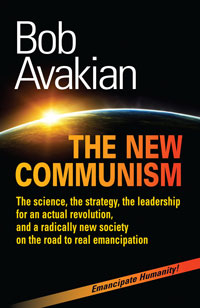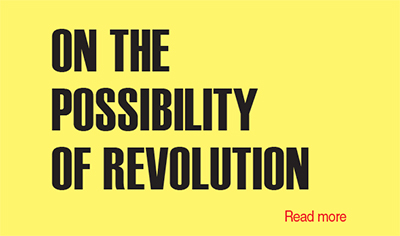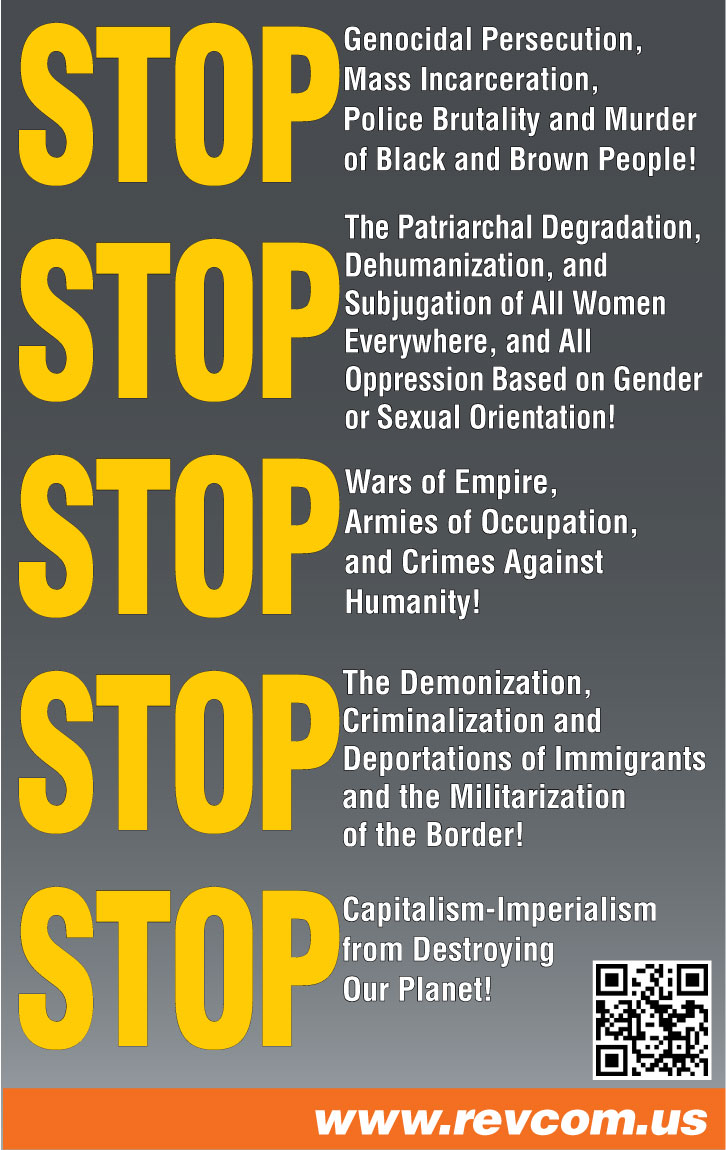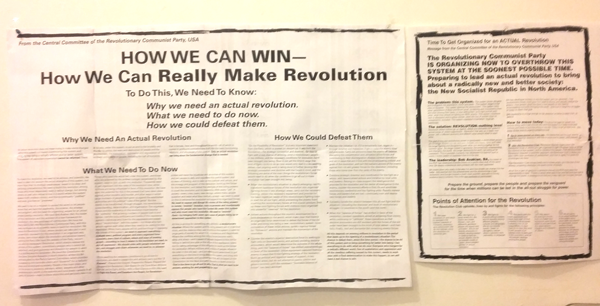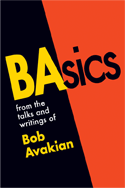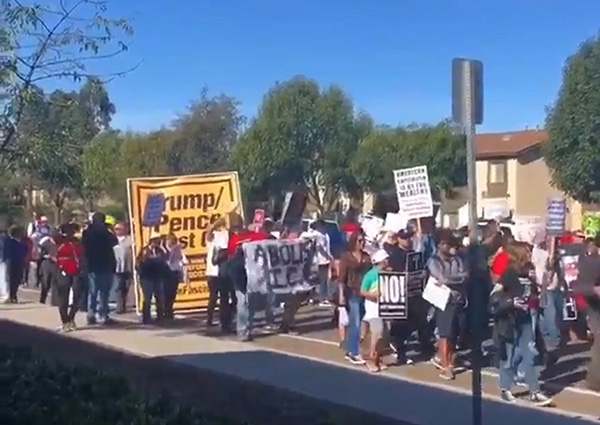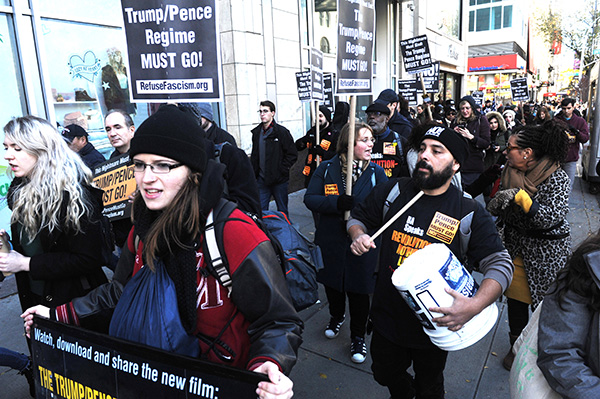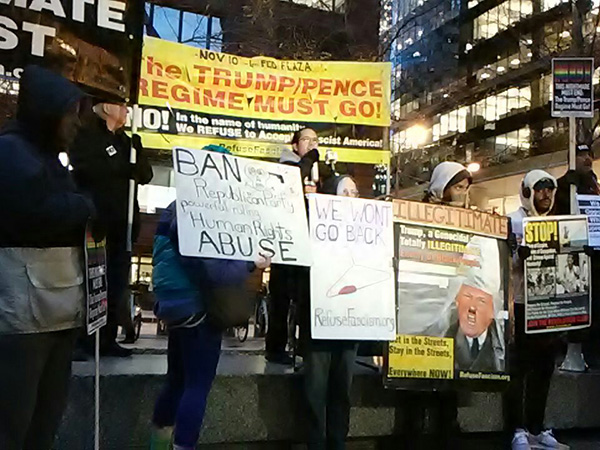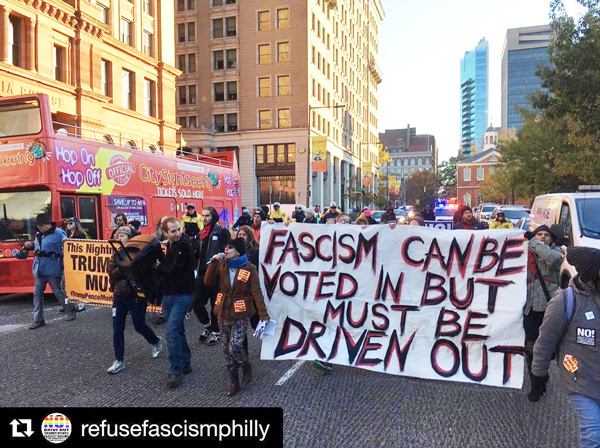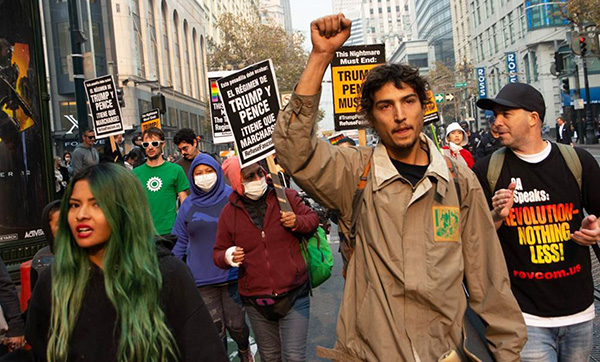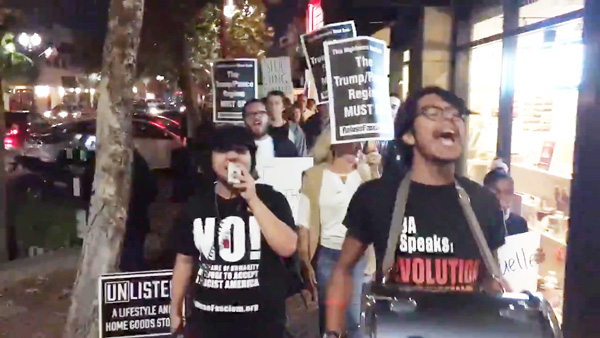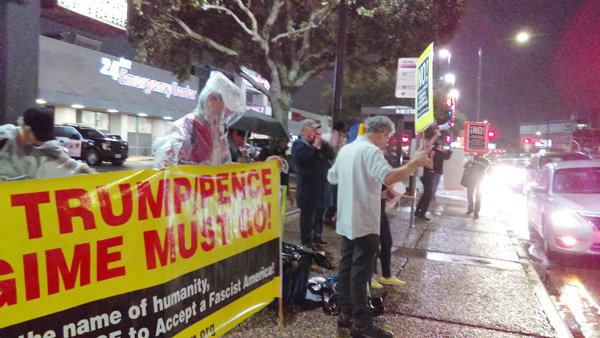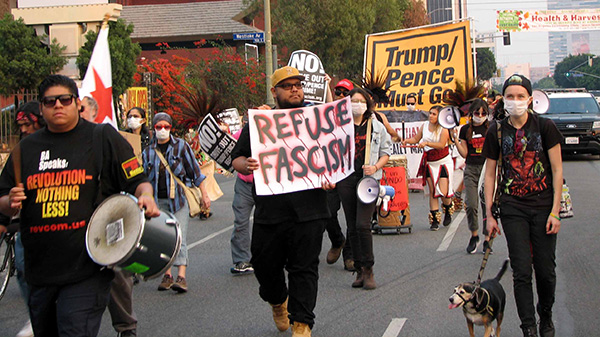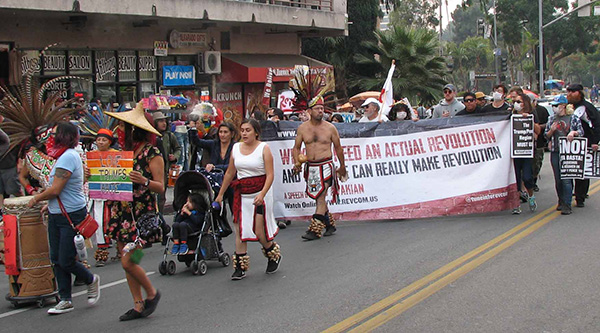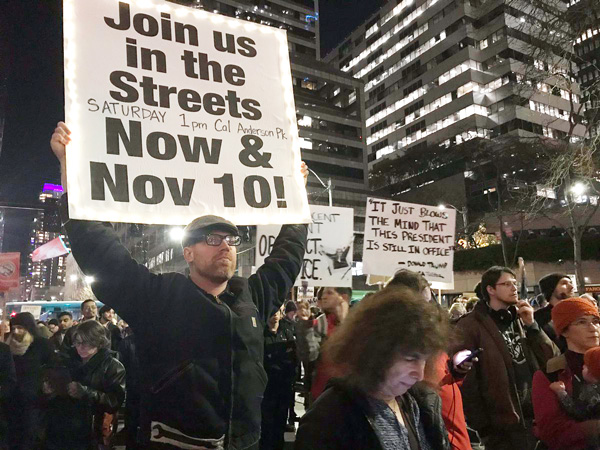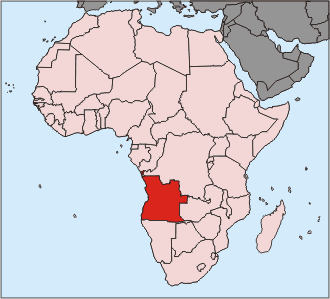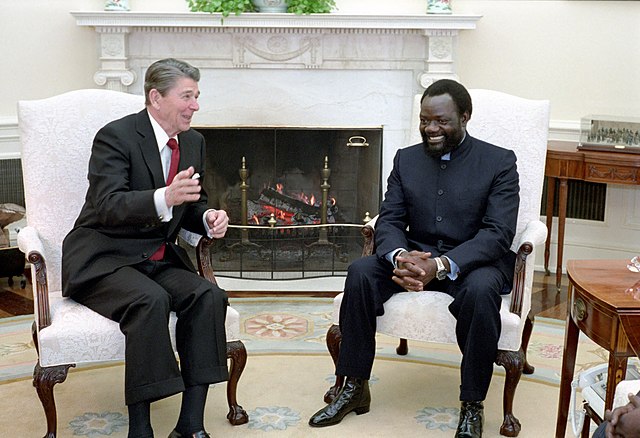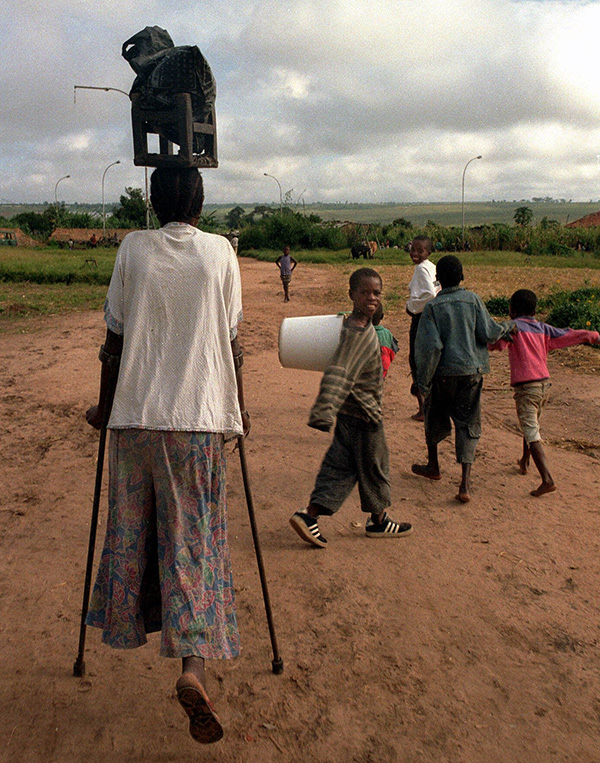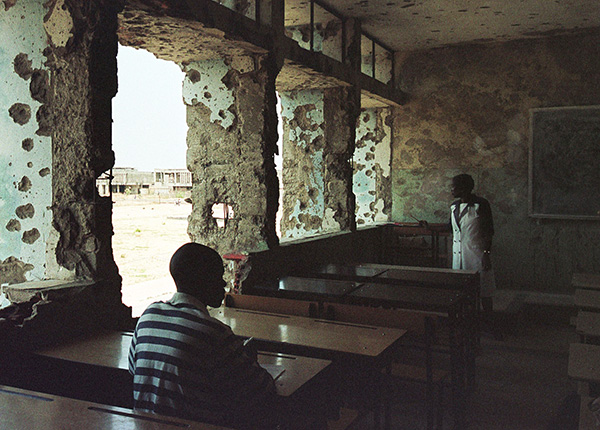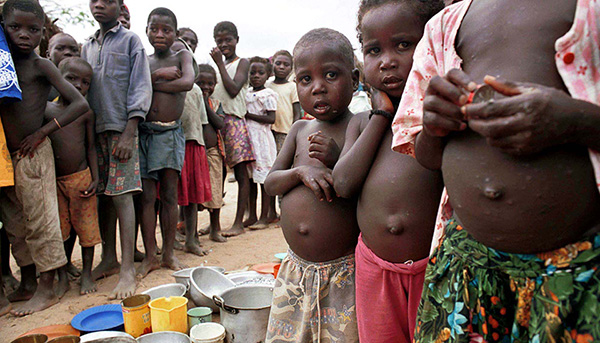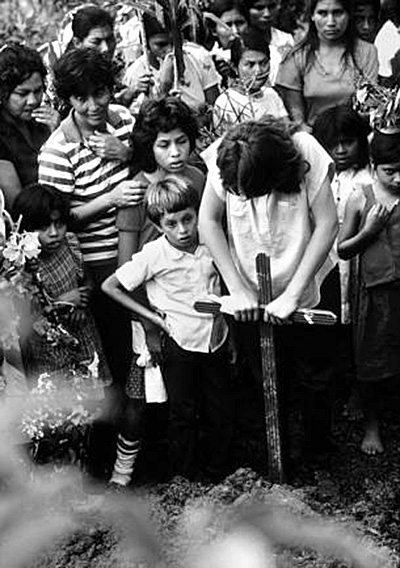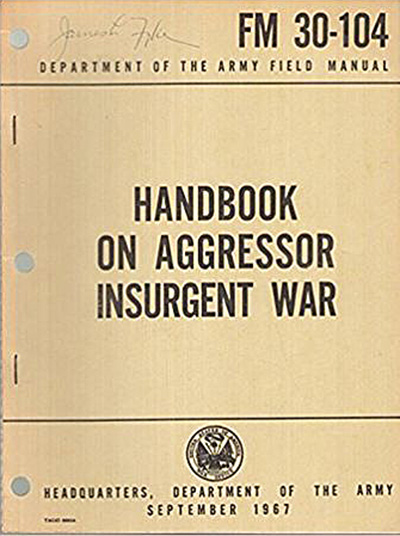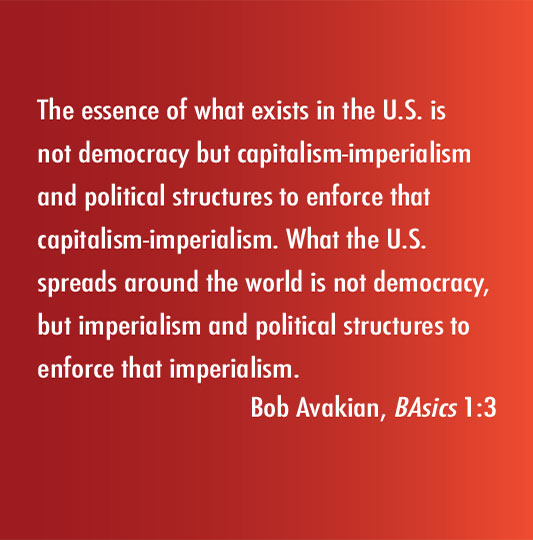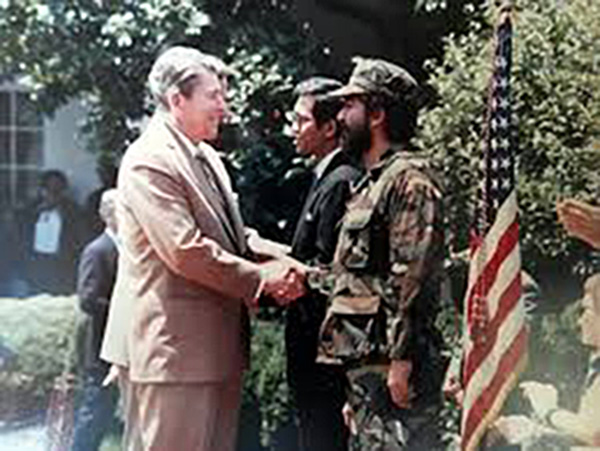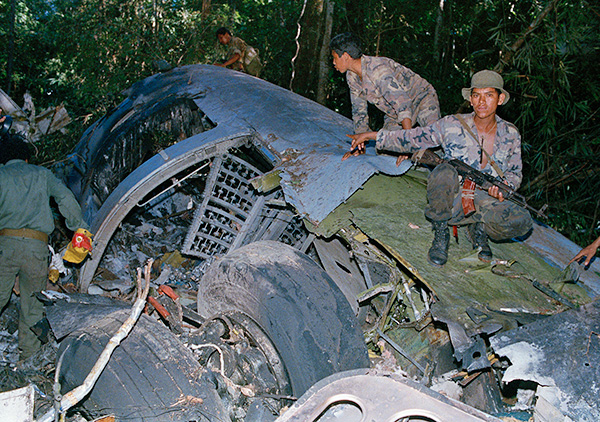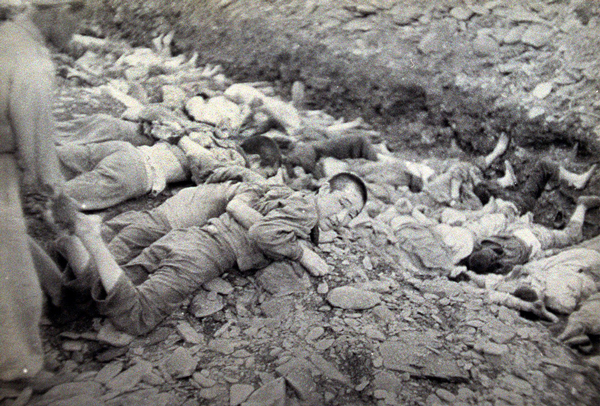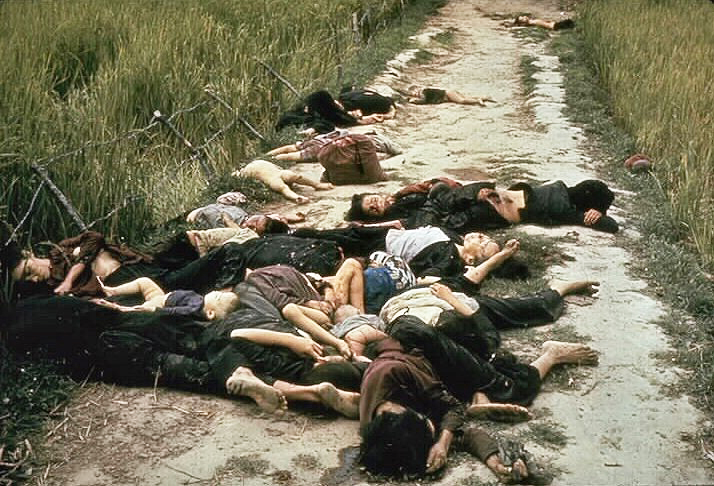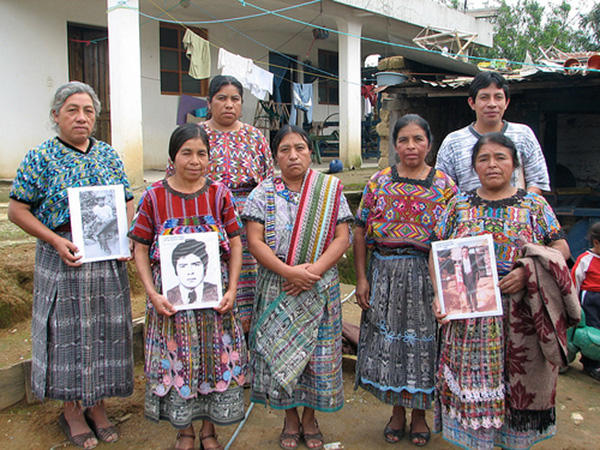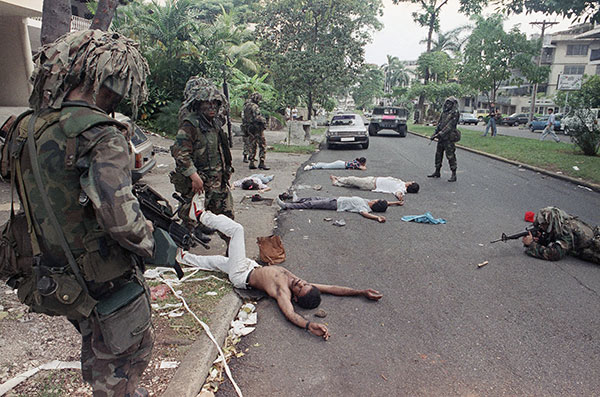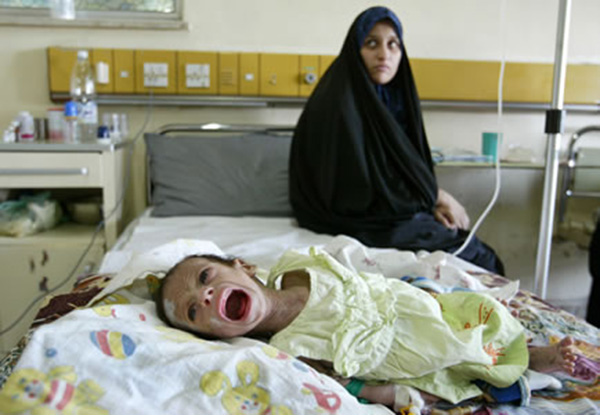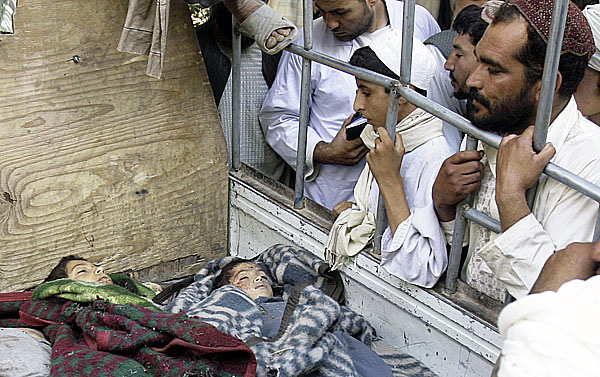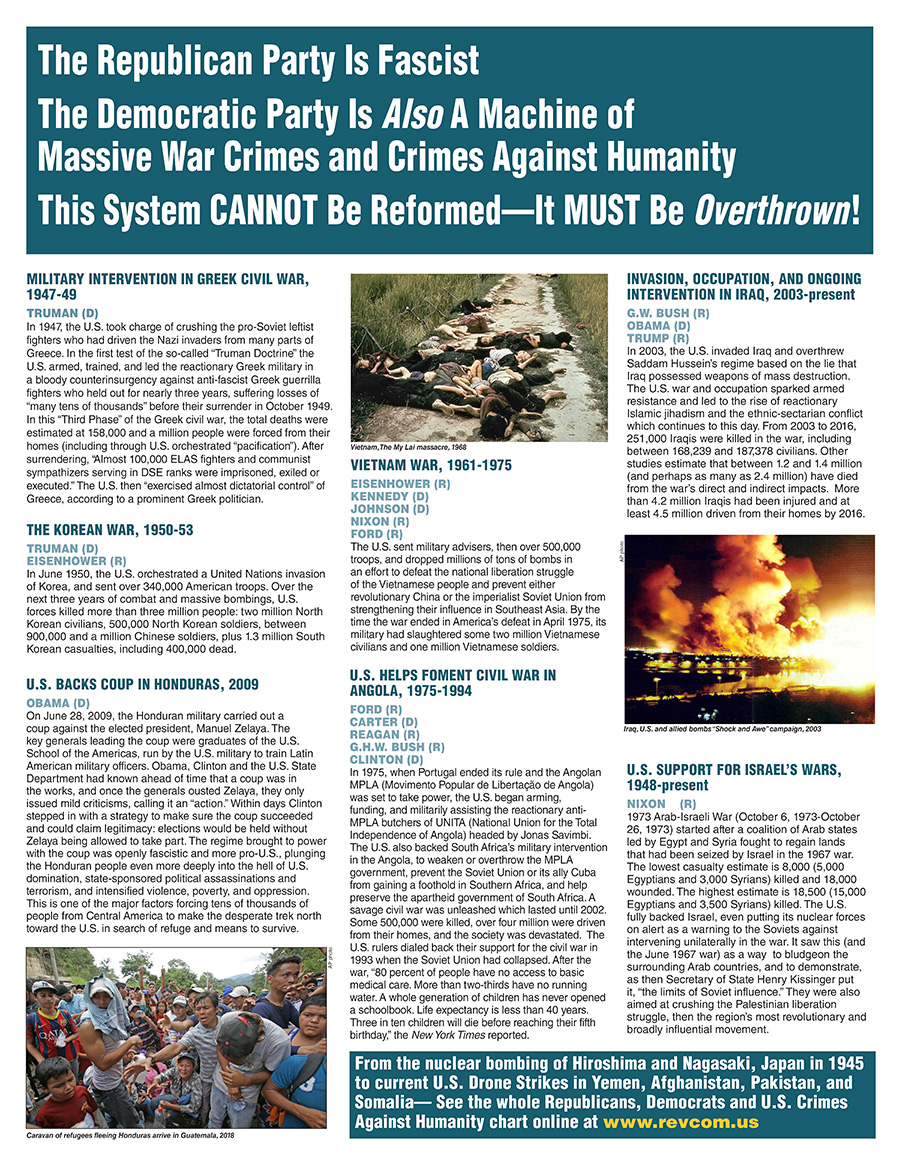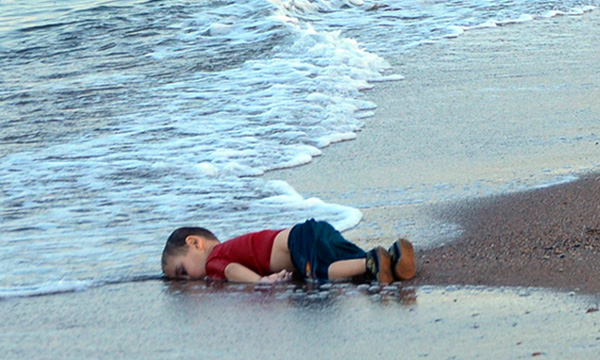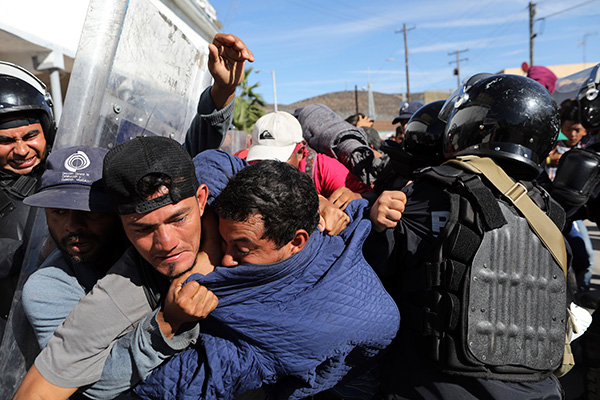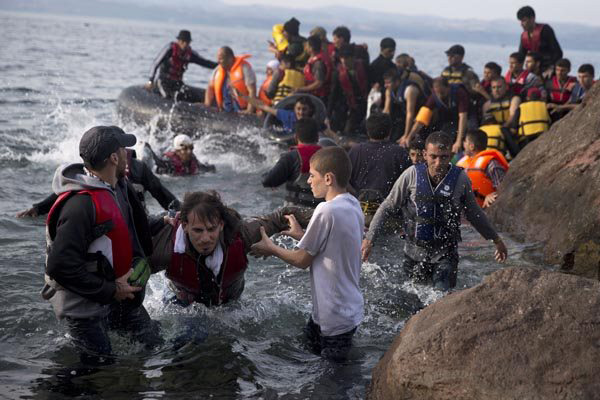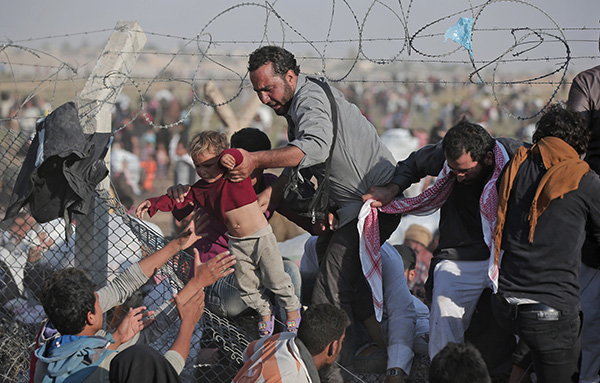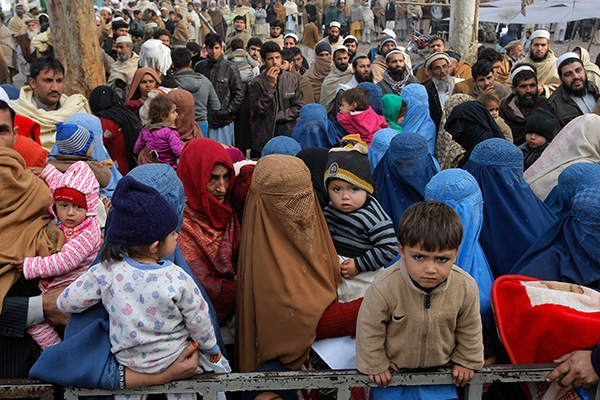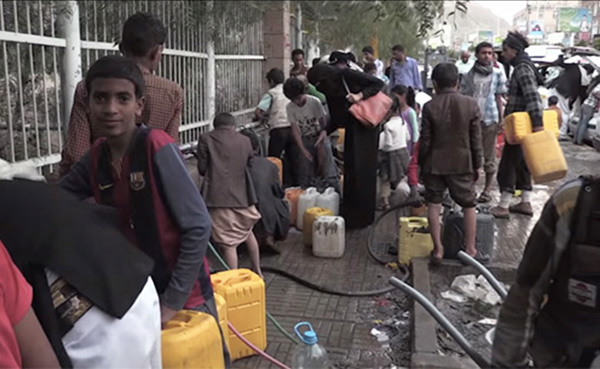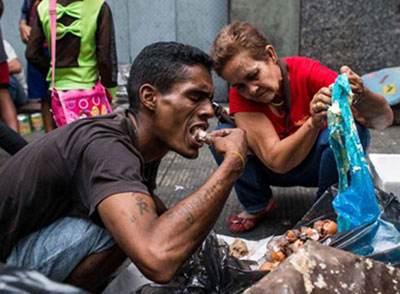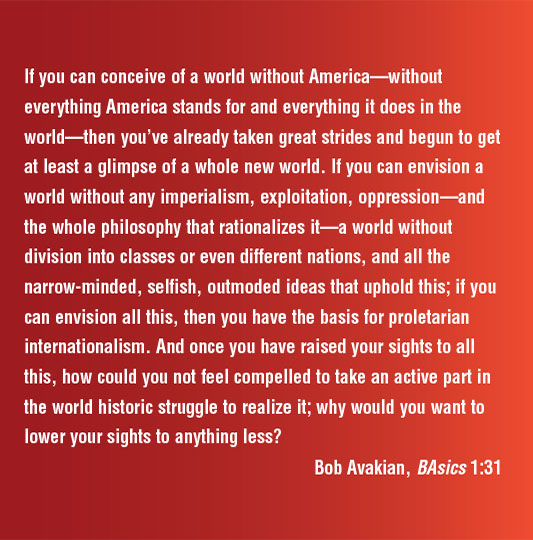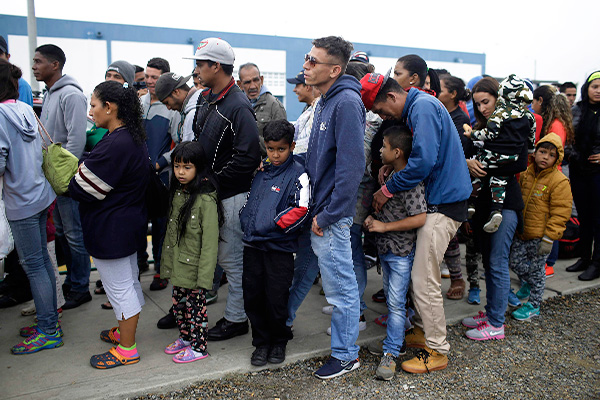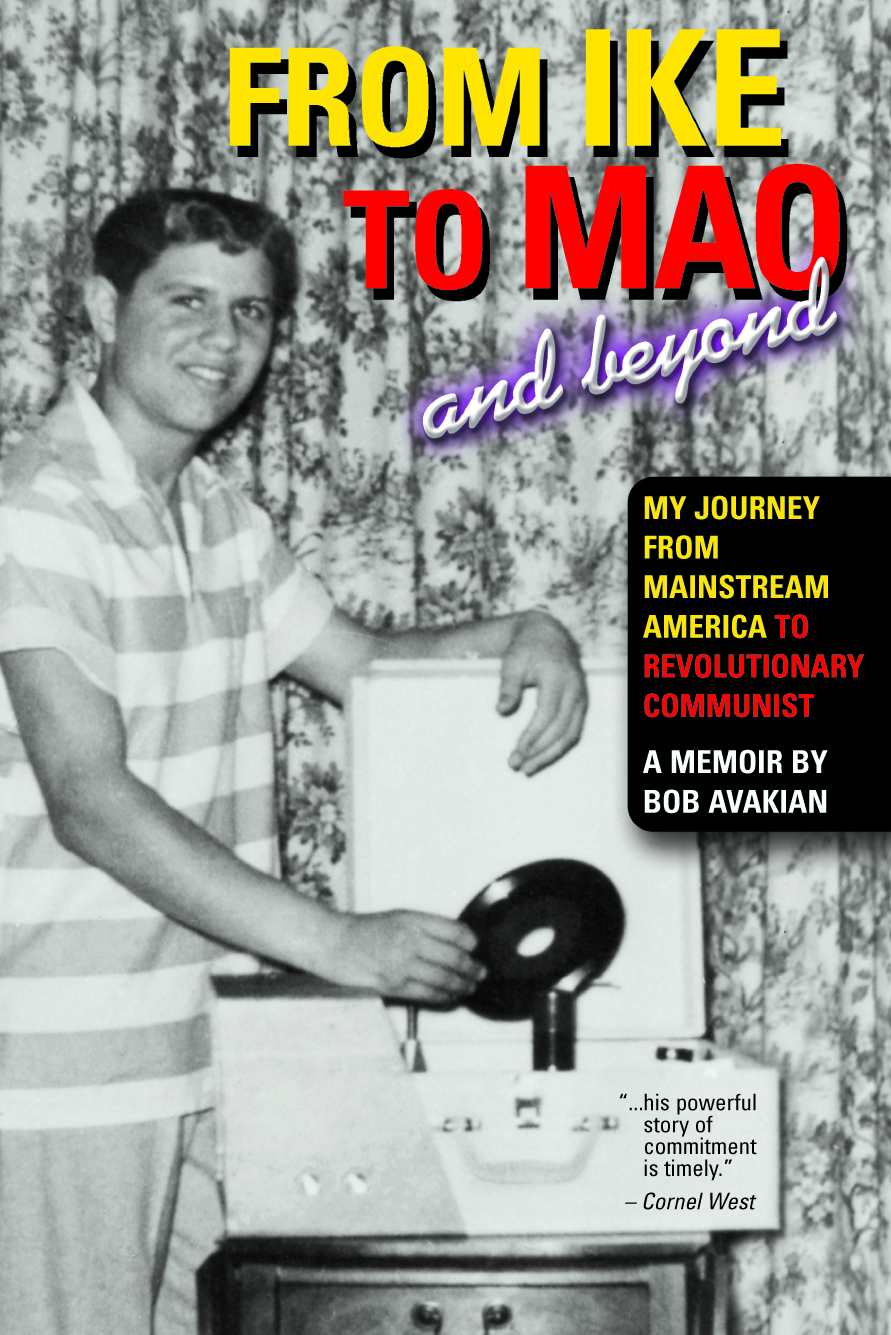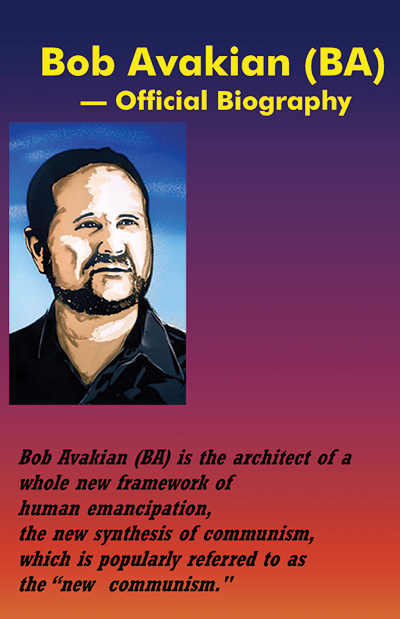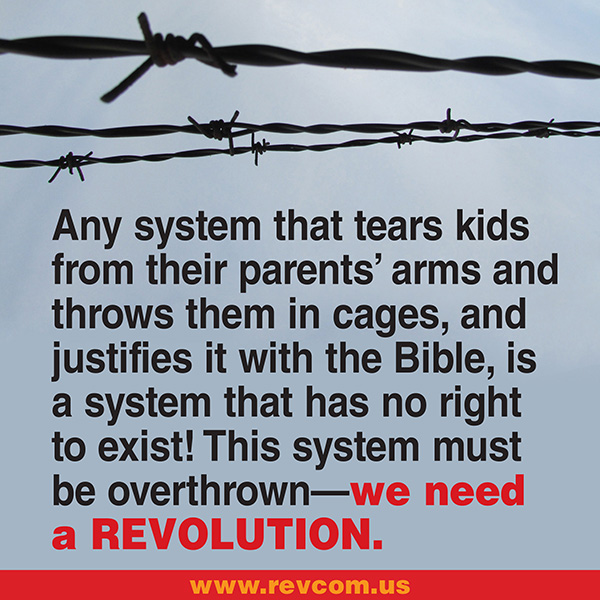U.S. Wars and Interventions |
President |
The Human Cost |
The nuclear bombing of Hiroshima and Nagasaki, August 1945 |
Harry Truman (D) |
As Japan was suing for peace and World War 2 was coming to an end, on August 6, the U.S. dropped the first atomic bomb ever used on the city of Hiroshima. By the end of 1945, between 140,000 and 150,000 people, overwhelmingly civilians, died from the attack and hundreds of thousands more were wounded. On August 9, the U.S. dropped an even more powerful nuclear bomb on Nagasaki, destroying the city and murdering another 70,000 people.1 |
Military intervention in the Chinese Revolution, 1945-1949 |
Truman (D) |
By 1945, Japan had been defeated, in large part by decades of revolutionary struggle under the leadership of Mao Zedong and the Chinese Communist Party. A civil war soon broke out between China’s revolutionaries and the reactionary Nationalist Party (Kuomintang/KMT) under Chiang Kai-shek. The U.S. funneled billions in aid and military equipment to the KMT. The roughly 100,000 American troops stationed in China advised, trained, organized, and supported Chiang’s forces, even airlifting 500,000 to different battlefronts. Without U.S. backing the KMT would have been defeated more—perhaps much more—quickly. So U.S. intervention prolonged the conflict and contributed significantly to the terrible toll on the Chinese. Between 1945 and 1949, an estimated 2.5 million were killed, millions more were displaced, the economy collapsed, and tens of millions were left destitute.2 |
Turning Micronesia into a nuclear testing ground, 1946-1962 |
Truman (D)
Dwight Eisenhower (R)
John Kennedy (D)
|
From 1946 to 1962, the U.S. turned Micronesia—a region in the Western Pacific Ocean comprising thousands of small islands, including the Marshall Islands—into a nuclear test site which it named the “Pacific Proving Ground.” It carried out its first test by exploding a nuclear bomb over Bikini Atoll in 1946, and between 1947 and 1962 carried out 102 tests over, on, or under the waters of these precious islands. Of these tests, 67 were atomic bombs.
Some islands were evacuated prior to testing and were obliterated. But other tests were carried out on inhabited islands and people were exposed to huge amounts of nuclear fallout and suffered acute radiation illness including nausea, vomiting, burns, hair loss, hypothyroidism, and miscarriages. Some were guinea pigs in a secret medical experiment to study the effects of radiation on human beings. Today, 60 years after nuclear testing, entire islands remain uninhabitable and many islanders still suffer their aftereffects, in some instances with thyroid cancer rates 200 percent above the national baseline.3 |
Military intervention in Greek civil war, 1947-49 |
Truman (D) |
In 1947, the U.S. took over from Britain, whose troops had spent three years trying to crush the pro-Soviet leftist fighters that had driven the Nazi invaders from many parts of Greece during World War 2. The U.S. armed, trained, and led the reactionary Greek military in a bloody counterinsurgency against these anti-fascist Greek guerrilla fighters who held out for nearly three years, suffering losses of many tens of thousands before their surrender in October 1949. In this “Third Phase” of the Greek civil war, the total deaths were estimated at 158,000 and a million people were forced from their homes (including through U.S.-orchestrated “pacification”). After surrendering, “Almost 100,000 ELAS fighters and communist sympathizers serving in DSE ranks were imprisoned, exiled or executed.” The U.S. then “exercised almost dictatorial control” of Greece in the economic sphere, according to a prominent Greek politician.4 |
The Korean War,
1950-53 |
Truman (D)
Eisenhower (R) |
In June 1950, the U.S. orchestrated a United Nations invasion of Korea, and sent over 340,000 American troops. Over the next three years of combat and massive bombings, U.S. and U.S.-led forces killed more than three million people: two million North Korean civilians, 500,000 North Korean soldiers, between 900,000 and a million Chinese soldiers. There were also 1.3 million South Korean casualties, including 400,000 dead.5 |
Korean War 1950-53: U.S. Army photo depicts the summary execution of 1,800 South Korean political prisoners July 1950 carried out by the U.S.-installed puppet Syngman Rhee.
|
U.S. nuclear threats against China and North Korea, 1950-1951 |
Truman (D) |
On November 30, 1950, Truman stated publicly that the U.S. was considering using nuclear weapons against Chinese and North Korean forces. That day, the Strategic Air Command was ordered to “be prepared to dispatch without delay medium bomb groups to the Far East ... this augmentation should include atomic capability.” Some in government advocated a “limited war” against China, including air attacks and a naval blockade. Gen. Douglas MacArthur, then in overall command of U.S. forces in Korea, argued for dropping 30 to 50 atomic bombs on Manchuria and Chinese cities. (Truman feared this could end up harming U.S. interests and fired MacArthur in the spring of 1951.)6 |
CIA coup in Iran, 1953 |
Truman (D)
Eisenhower (R) |
On August 19, 1953, the U.S. Central Intelligence Agency (CIA), along with British intelligence, launched a military coup overthrowing Iran’s popular, elected prime minister, Mohammad Mossadegh. In 1951, during an upsurge of protest against British colonialism, Mossadegh had nationalized Britain’s Anglo-Iranian Oil Company.
That day, CIA-organized mobs, joined by the military, took over streets chanting “Long live the Shah! Death to Mossadegh!” Street battles raged. By late afternoon, military units seized control of Mossadegh’s house, breaking the resistance. By evening, 300 lay dead, and Iran’s Mohammad Reza Shah [King] Pahlavi’s throne was secure.
Iran’s nationalist upsurge was crushed. The U.S. replaced Britain as the dominant imperialist power in Iran. Mossadegh’s nationalization was reversed, and U.S. oil giants were cut in on the spoils, reaping enormous profits. The coup embedded Iran as a key military outpost for the U.S. against regional liberation struggles and in its Cold War clash with the Soviet Union.
The Shah ruled as an iron-fisted U.S. puppet for 25 years. Speaking out risked arrest by SAVAK, his U.S.-trained secret police. Thousands were murdered, jailed, or barbarically tortured—they even threatened to torture children in front of their parents. When millions rose against the Shah in 1978-79, he shot down thousands with U.S. backing before being ousted. The 1953 coup and what followed ended up helping pave the way for a new Iranian nightmare: the 1979 founding of the Islamic Republic of Iran.7 |
U.S. threatens nuclear attack against Iraq’s 1958 revolution |
Eisenhower (R) |
After the pro-Western Iraqi monarchy was overthrown in a nationalist military coup, the U.S. threatened war against the new republic. U.S. forces, including the Strategic Air Command, were put on worldwide alert, and 70 naval vessels, hundreds of aircraft, and 14,000 Marines were dispatched to neighboring Lebanon, including an atomic unit with artillery capable of firing nuclear shells. Eisenhower had secretly ordered the military to prepare to use nuclear weapons to prevent an Iraqi takeover of Kuwait’s oil fields. In response to U.S. threats and deployments, the Soviet Union began large-scale maneuvers on its borders with Turkey and Iran. “Until the makeup and intentions of the new Republic of Iraq became clear, ‘general war’ was a real possibility,” one journalist summed up.8 |
Vietnam War, 1961-1975 |
Eisenhower (R)
John Kennedy (D)
Lyndon Johnson (D)
Richard Nixon (R)
Gerald Ford (R) |
The U.S.first sent military advisers, then more than 500,000 troops, and dropped millions of tons of bombs in an effort to defeat the national liberation struggle of the Vietnamese people and prevent either revolutionary China or the imperialist Soviet Union from strengthening their influence in Southeast Asia. By the time the war ended in America’s defeat in April 1975, its military had slaughtered some two million Vietnamese civilians and one million Vietnamese soldiers.9 |
My Lai massacre.
Photo: Wikimedia Commons
|
Planning for nuclear war with the Soviet Union and China, 1950s and ’60s. |
Truman (D)
Eisenhower (R)
Kennedy (D)
|
Whistleblower Daniel Ellsberg saw a copy of these war plans in 1961.He later wrote: “The total death toll as calculated by the Joint Chiefs, from a U.S. first strike aimed at the Soviet Union, its Warsaw Pact satellites, and China, would be roughly six hundred million dead. A hundred Holocausts.”10 |
Murdering the Congo’s Patrice Lumumba, installing the butcher Mobutu, 1961-1997 |
Eisenhower (R)
Kennedy (D)
Lyndon B. Johnson (D)
Richard Nixon (R)
Gerald Ford (R)
Jimmy Carter (D)
Ronald Reagan (R)
George H.W. Bush (R)
Bill Clinton (D)
|
On January 17, 1961, a firing squad shot to death the Congolese anti-colonialist leader Patrice Lumumba, just months after he’d been elected prime minister of the newly founded Republic of the Congo. This brutal murder was carried out by Lumumba’s Congolese enemies, but it had been called for by President Eisenhower in August 1960 and organized by CIA Director Allen Dulles, who wrote the CIA station chief in the Congo that Lumumba’s “removal must be an urgent and prime objective.”
Murdering Lumumba, who sought to use the Congo’s vast mineral resources to improve its people’s lives, and then in 1965 installing the brutal regime of Mobutu Sese Seko, turned the Congo into a bulwark for U.S. political and military intervention in Africa for nearly three decades. While global imperialism and Mobutu plundered the country, Congolese suffered hellish enslavement and medieval destitution. “How do I describe ... the feeling of holding in my arms a child half-dead from lack of protein,” one eyewitness wrote, “his hair a sickly orange, his face bloated and puffy, his abdomen an overstretched balloon?” Meanwhile, Carter intervened to save Mobutu in 1977 and 1978, Reagan hailed him as “a voice of good sense and good will,” and George H.W. Bush called him “our best friend in Africa.”11 |
The Bay of Pigs invasion, 1961 |
Kennedy (D) |
The U.S. attempted to spark the overthrow of Cuba’s government, headed by Fidel Castro, by organizing this invasion by reactionary Cuban exiles. It was defeated, but during the fighting some 2,000 to 6,000 Cuban soldiers, militia personnel, and others were killed, wounded, or went missing.12 |
Cuban missile crisis, 1962 |
Kennedy (D) |
The U.S. was carrying out secret operations to overthrow the Cuban government (and on another front, had also stationed nuclear missiles threatening the Soviet Union in Turkey). At Cuba’s request, the Soviets placed 36 nuclear-armed missiles in Cuba. The U.S. demanded the missiles be removed, sent U-2 spy planes over Cuba (one was shot down), placed a naval blockade on Cuba, dropped depth charges near a disabled Soviet submarine, considered invading, and put its nuclear forces on DEFCON 2 alert, the highest level short of nuclear war. For 13 days, the world hovered on the brink of nuclear holocaust before the crisis was defused.13 |
Invasion of Dominican Republic, 1965 |
Johnson (D) |
On April 28, 1965, 22,000 U.S. Marines and other troops invaded the Dominican Republic to crush a just, mass uprising against the country’s pro-U.S. tyranny. Some 3,000 to 4,000 Dominicans were killed, although others estimated that the death toll was as high as 6,000 to 10,000.14 |
CIA orchestrates bloodbath in Indonesia, 1965-1966 |
Johnson (D) |
For many months, starting at the end of 1965, the reactionary Indonesian military, led by the pro-U.S. General Suharto, as well as other reactionary forces that it unleashed, slaughtered people with wild abandon. This massive bloodbath was set in motion, backed, and orchestrated by the U.S., which provided the military with equipment, weapons, and ultimately tens of billions of dollars. CIA advisers counseled Indonesian generals and provided them with a “hit list” of 5,000, then checked off their names as they were murdered. When the bloodletting ended, at least 500,000, perhaps more than a million, had been killed, including members of the Communist Party of Indonesia, trade unionists, intellectuals, teachers, land reform advocates, ordinary peasants, ethnic Chinese, women, and children. Hundreds of thousands more were arrested and tortured.15 |
Bombing of Laos, 1965-1973 |
Johnson (D)
Nixon (R) |
During the war in Vietnam, U.S. warplanes dropped two million tons of bombs on the small neighboring country of Laos, more than had been dropped on Germany or Japan during World War 2. These included anti-personnel cluster bombs. There’s been no accounting of those killed or wounded during the bombing, but over 20,000 people have been killed or maimed by unexploded ordinance—including cluster bombs—in the decades since the war ended.16 |
Bombing of Cambodia, 1969-1973 |
Nixon (R) |
The U.S. also carpet bombed Cambodia during the war in Vietnam, directly or indirectly killing 100,000 to 600,000 Cambodians—mostly civilians. Hundreds of thousands more likely died due to displacement, disease, and starvation in this period. Over two million people, more than 25 percent of its population, were driven from their homes in the countryside.17 |
Christmas bombing of North Vietnam, December 18-29, 1972 |
Nixon (R) |
The U.S. massively bombed the densely populated cities of Hanoi and Haiphong to force concessions by North Vietnam in negotiations to end the war. It claimed 1,600 Vietnamese civilians were killed, but Vietnamese sources estimate there were 2,300 civilian deaths—about 1,500 in Hanoi alone.18 |
CIA-organized military coup in Chile, 1973 |
Nixon (R) |
Beginning in the early morning hours of September 11, 1973, the Chilean military, with political guidance and secret backing from the U.S., carried out a coup against the leftist government of Chilean president Salvador Allende. More than 3,000 Chilean people were executed, thousands more were “disappeared,” and tens of thousands tortured; over 140,000 people were rounded up during the coup, and in the few years that followed, as many as one million people out of Chile’s population of 11 million were forced into exile.19 |
U.S. foments civil war in Angola, 1975-1994
|
Ford (R)
Carter (D)
Reagan (R)
George H.W. Bush (R)
Clinton (D) |
In the 1960s, when the Angolan people were fighting to lift the yoke of Portuguese colonialism, the U.S. backed the Portuguese government’s attempts to crush their struggle—including supplying the colonial regime with napalm. In 1975, when Portugal ended its rule and the Angolan MPLA was set to take power, the U.S. began arming, funding, and militarily assisting the reactionary anti-MPLA butchers of UNITA headed by Jonas Savimbi. The U.S. also backed South Africa’s military intervention in Angola to weaken or overthrow the MPLA government, prevent the Soviet Union or its ally Cuba from gaining a foothold in Southern Africa, and help preserve the apartheid government of South Africa. A savage civil war was unleashed which lasted until 2002. Some 500,000 were killed, over four million were driven from their homes, and the society was devastated. The U.S. rulers only dialed back their support for the civil war in 1993 when the Soviet Union had collapsed. After the war, “80 percent of people have no access to basic medical care. More than two-thirds have no running water. A whole generation of children has never opened a schoolbook. Life expectancy is less than 40 years. Three in ten children will die before reaching their fifth birthday,” the New York Times reported.20 |
Covertly fueling terror in Mozambique, 1977-1992 |
Carter (D)
Reagan (R)
George H.W. Bush (R) |
Between 1977 and 1992, the U.S. covertly fueled a reactionary war and a barbaric campaign of mass terror in the southern Africa country of Mozambique. This newly independent nation was ruled by the nationalist Front for the Liberation of Mozambique (FRELIMO), which was aided by the Soviet Union. The white settler states of Rhodesia (now Zimbabwe) and South Africa, secretly backed by the U.S., formed, supported, and armed the “Mozambican National Resistance” (RENAMO). Their goal: to force Mozambique to halt support for the just struggle against apartheid South Africa, drive it into the arms of Western imperialism, and prevent the imperialist Soviet Union from gaining a foothold in southern Africa.
RENAMO systematically carried out crimes against humanity as part of a strategy to cripple and destabilize Mozambique’s government. It abducted children to be soldiers. It forced villagers to produce food, transport munitions, and turned village women into sex slaves—devastating agriculture (as well as the country’s infrastructure) and spawning mass starvation and famines which killed hundreds of thousands. It carried out brutal massacres, including the 1987 slaughter of 424 civilians, including hospital patients in the town of Homoine, and directly murdered some 100,000 people in all. U.S. ally South Africa gave RENAMO logistical, military, and financial support, and also carried out direct attacks in Mozambique, including cross-border raids, aerial bombings, sabotage, assassinations, kidnappings, even a 1986 invasion aimed at cutting Mozambique in half in 1986. Between 600,000 and one million died of war-related causes.
The U.S. secretly supported this slaughter—through private parties (the right-wing Heritage Foundation gave RENAMO office space in Washington, DC, for instance) and covert backing for South Africa. Author Mahmood Mamdani summed up, “Simply put, after the defeat in Vietnam and the Watergate scandal, the United States decided to harness, and even to cultivate, terrorism in the struggle against regimes it considered pro-Soviet.”21 |
Supporting Indonesian genocide in East Timor, 1975-1999 |
Ford (R)
Carter (D)
Reagan (R)
George H.W. Bush (R)
Clinton (D) |
On December 6, 1975, President Ford and Secretary of State Henry Kissinger met with America’s close ally, Indonesian dictator Suharto (who spearheaded the mass slaughter of leftists in 1965 and then staged a military coup in 1967—all with U.S. backing), and green-lighted Indonesia’s invasion of its neighbor, East Timor. “What followed was one of the greatest genocides of the 20th century. It is estimated that up to one-third of the Timorese population was killed through a policy of army massacre and enforced starvation. Many of those who were left were imprisoned and tortured by a military armed and trained by the United States.” The slaughter continued for almost 25 years. In 1999, after the Timorese voted for independence from Indonesia, pro-Indonesia forces murdered about 14,000 people. A few months later, the U.S. president—this time Clinton—was again meeting with Suharto to strengthen ties with his murderous regime.22 |
U.S. proxy war against the Soviet Union in Afghanistan, 1979-1989
|
Carter (D)
Reagan (R) |
After the Soviet Union, the U.S.’s main imperialist rival, invaded Afghanistan in 1979, the U.S., along with Pakistan and Saudi Arabia, armed, organized, and funded the reactionary Islamic fundamentalist Mujahideen (who later became Afghanistan’s Taliban and Osama bin Laden’s Al Qaeda) to wage war against the Soviet forces and the Afghan regime it backed. When the Soviets finally pulled out of Afghanistan in 1989, between 800,000 and 1.5 million Afghans (along with 15,000 Soviet soldiers) had been killed in this reactionary bloodbath and five million Afghans, one-third of its population at the time, had been driven out of the country as refugees.23 |
U.S. threatens tactical nuclear war over Iran, 1980 |
Carter (D) |
During and immediately after the 1979 Iranian revolution, the U.S. and the Soviet Union engaged in a series of high-stakes warnings and threats, backed by military maneuvers and nuclear alerts, to maintain or increase their leverage in Iran. In August 1980, the U.S. warned the Soviets that any move into Iran would lead to a direct military confrontation. Those options included the use of tactical nuclear weapons. For the first time, National Security Advisor Zbigniew Brzezinski later wrote, “the United States deliberately sought for itself the capability to manage a protracted nuclear conflict.”24 |
U.S. backs El Salvador death squads, 1980-92 |
Carter (D)
Reagan (R)
George H.W. Bush (R) |
To crush a guerrilla struggle against its brutal client regime, the U.S. supported, funded, and armed death squads that carried out extra-judicial executions and massacres which killed as many as 75,000 Salvadorans25 |
Fueling the Iran-Iraq war, 1980-1988 |
Carter (D)
Reagan (R) |
In September 1980, Iraq’s Saddam Hussein invaded Iran with a green light from the U.S. Their common goal—to weaken or topple the new Islamic Republic. The U.S. sold (or had allies sell) arms to Iraq, including the capability to make biological and chemical weapons (which were used against Iran), and provided military intelligence. For a time, the U.S. also supplied Iran with weapons. U.S. machinations prolonged the war and worsened the slaughter: Conservative estimates place the death toll at 262,000 to 367,000 Iranians and 105,000 Iraqis, plus an estimated 700,000 injured or wounded on both sides.26 |
The U.S.-sponsored Contra war in Nicaragua, 1981-1988 |
Reagan (R)
George H.W. Bush (R)
|
After the Sandinistas overthrew the pro-U.S. Somoza dictatorship in 1978, and established friendly ties with the Soviet Union, the U.S. was determined to overthrow them. “For eight terrible long years, the people of Nicaragua were under attack by Washington’s proxy army, the Contras, formed from Somoza’s vicious National Guardsmen and other supporters of the dictator. It was all-out war ... burning down schools and medical clinics, raping, torturing, mining harbors, bombing and strafing.” As many as 50,000 people were killed. In 1990 the U.S. forced a “free election” with the threat of escalated terror if people supported the Sandinista government. It fell. Today, Nicaragua is one of the poorest and most violence plagued nations in the hemisphere.27 |
U.S.-backed genocide in Guatemala, 1982-1983 |
Reagan (R) |
In 1982, the U.S. backed a military coup by the Christian fanatic General José Efraín Ríos Montt, who then launched a genocidal assault on Guatemala’s indigenous Mayan population. With U.S. aid and support, Guatemala’s military systematically destroyed more than 600 indigenous Mayan villages and slaughtered some 75,000 people. The Guatemalan military regime’s savage, U.S.-supported war against leftist opponents and peasants (which had begun in the 1960s) continued until 1996. During those decades it’s estimated that some 200,000 people were disappeared or killed.28 |
1982-1983: Armed and backed by the U.S., the Guatemalan military systematically destroyed more than 600 indigenous Mayan villages, and slaughtered some 75,000 people.
|
Invasion of Grenada, 1983 |
Reagan (R) |
The U.S. invaded this small island nation to overthrow its leftist government, an action the UN denounced as a “flagrant” violation of international law. U.S. forces killed 45 Grenadians and 25 Cubans working there in support of Grenada’s government, and wounded a total of 396 Grenadians and Cubans.29 |
America’s complicity in the massacre of Iraqi Kurds, 1987-1988 |
Reagan (R) |
After facilitating Iraq’s development of chemical weapons, the U.S. turned a blind eye and continued to support it when it used them against Iraq’s Kurds. As many as 60,000 were massacred, including an estimated 5,000 in one gas attack at Halabja, according to an Iraq scholar. A Defense Intelligence Agency officer told the New York Times that the Pentagon “wasn’t so horrified by Iraq’s use of gas. It was just another way of killing people—whether with a bullet or phosgene, it didn’t make any difference.”30 |
The shoot-down of Iran Air Flight 655, 1988 |
Reagan (R) |
On July 2, 1988, at a time the U.S. was seeking to end the eight-year-long Iran-Iraq war, the naval warship USS Vincennes shot down an unarmed Iranian civilian passenger jet—Iran Air Flight 655—as it flew over the Persian Gulf. All 290 passengers on board were killed.31 |
The invasion of Panama, 1989-1990 |
George H.W. Bush (R) |
On December 20, 1989, the U.S. military invaded Panama with 27,684 troops and 300 aircraft, removing Manuel Noriega and his Panamanian Defense Force from power. Whole neighborhoods were destroyed and an estimated 3,000-6,000 Panamanians—mainly civilians—were killed.32 |
On December 20, 1989, the U.S. military invaded Panama with 27,500 troops and 300 aircraft, killing thousands of civilians and removing Manuel Noriega. (Photo: AP)
|
The Persian Gulf War—the U.S. assault on Iraq, 1990-1991 |
George H.W. Bush (R) |
From January 16 to February 27, 1991, the U.S. waged war against Iraq to strengthen its grip on the Persian Gulf and set the tone for the post-Soviet “new world order” it sought to establish. Some 100,000 Iraqi soldiers were killed and another 300,000 wounded. The war also caused the deaths of 70,000 civilians by January 1992.33 |
U.S.-UN killer sanctions on Iraq, 1990-2003 |
George H.W. Bush (R)
Clinton (D)
George W. Bush (R) |
In the months leading up to the January-March 1991 Persian Gulf War, the U.S. and UN imposed a crippling economic blockade on Iraq. Then, during the attack, U.S. bombers destroyed much of Iraq’s infrastructure, including its electrical, water, and sewage treatment systems. By 1997, the UN reported that more than 1.2 million Iraqis had died as a result of medical shortages caused by the war and sanctions, including 750,000 children under the age of five. A 1999 survey found that twice as many Iraqi children under five were dying than before the Gulf War. That’s roughly 5,000 Iraqi children under five dying each month thanks to U.S. actions.34 |
Iraq, 2004
Iraqi woman seeks treatment for her three-month-old son suffering from dehydration due to U.S. sanctions. (Photo: AP)
|
Military intervention in the former Yugoslavia: Bosnia, 1994-95; Serbia, 1999 |
Clinton (D) |
In the 1990s, the multi-national Republic of Yugoslavia was torn apart by the forces of reactionary nationalism, egged on, backed, and manipulated by Germany, Russia, the U.S., and other imperialist powers. A complex series of brutal wars erupted in which over 100,000 died. At various points, NATO—under U.S. command—intervened in order to shape the outcome in U.S. interests, carrying out its own war crimes. In April 1999 alone, NATO planes conducted hundreds of runs, destroying homes, apartment complexes, and bridges, and killing over 100 civilians in Kosovo and Serbia.35 |
Invasion and occupation of Afghanistan, 2001-present |
George W. Bush (R)
Obama (D)
Donald Trump (R) |
In October 2001, U.S. forces invaded Afghanistan, drove the Islamic fundamentalist Taliban regime from power, and installed a widely hated, pro-U.S. “Islamic Republic.” But the U.S. has never succeeded in defeating the Taliban or stabilizing the country, and the U.S. air and ground war has continued ever since. By August 2016, some 111,000 people had been killed and over 116,000 injured. More than 31,000 of the dead were Afghan civilians.36 |
Afghanistan, 2008
Children killed by U.S. airstrike in Kabul, Afghanistan, 2008. (Photo: AP)
|
Invasion, occupation, and ongoing intervention in Iraq, 2003-present
|
George W. Bush (R)
Obama (D)
Trump (R) |
In 2003, the U.S. invaded Iraq and overthrew Saddam Hussein’s regime based on the lie that Iraq possessed weapons of mass destruction. The U.S. war and occupation sparked armed resistance and led to the rise of reactionary Islamic jihadism and the ethnic-sectarian conflict that continues to this day. From 2003 to 2016, 251,000 Iraqis were killed in the war, including between 168,239 and 187,378 civilians. Other studies estimate that between 1.2 and 1.4 million (and perhaps as many as 2.4 million) have died from the war’s direct and indirect impacts. More than 4.2 million Iraqis had been injured and at least 4.5 million driven from their homes by 2016.37 |
U.S., British, French war on Libya, 2011 |
Obama (D) |
In March 2011, the U.S., Britain, and France seized on a mass uprising against Muammar Qaddafi’s oppressive, 42-year-long rule, to launch a war. Their goal: overthrow him and tighten their grip on Libya. For the next seven months, the U.S.-led coalition carried out extensive bombing raids and military operations. By October, between 10,000 and 30,000 had been killed and Qaddafi’s regime had been shattered. Libya was turned into a battleground between reactionaries, and life became a nightmare for the people, with shortages of food, water, and electricity. A third of the population had no medical care, and a half-million people were forced to flee from their homes.38 |
Arming, backing, and enabling the Saudi-led war in Yemen, 2015-present |
Obama (D)
Trump (R) |
In March 2015, Saudi Arabia, with U.S. arms, technical support, and political backing, launched a war against Yemen’s Houthi movement, which had taken power. Since then, between 57,000 and 60,000 have been killed, mainly by Saudi air strikes. The Saudis have bombed Yemen’s food, water, and medical systems, causing massive hunger and disease. At least 85,000 children have starved to death as a result, and in 2016 and 2017 alone, 113,000 children died of starvation or preventable disease. Now, 14 million Yemenis are on the brink of famine.39 |
U.S. support for Israel’s wars, 1948-present |
Truman (D) |
The Nakba (1948). Israel was created by defeating armies from Egypt, Jordan, Syria, and Iraq in war, and by violently forcing Palestinians from their lands and homes. Between 1947 and 1949, at least 750,000 Palestinians—of a population of 1.9 million—were expelled and made refugees. Zionist forces took more than 78 percent of historic Palestine, ethnically cleansed and destroyed about 530 villages and cities, and killed about 15,000 Palestinians in a series of mass atrocities, including more than 70 massacres. The U.S. supported the foundation of Israel, seeing an opportunity to undercut British influence in the region and strengthen its own. One of Truman’s aides argued that Israel “could become a strategic asset—a kind of stationary aircraft carrier to protect American interests in the Mediterranean and the Middle East.”40 |
|
Johnson (D) |
1967 War [“Six-Day War”] (June 5, 1967-June 10, 1967). In 1967, Israel launched a preemptive war against Egypt, Syria, and Jordan, crippling their air forces. Israel then carried out a successful ground offensive, seizing the Sinai Peninsula and the Gaza Strip from Egypt; the West Bank and East Jerusalem from Jordan; and the Golan Heights from Syria. Egypt’s casualties numbered more than 11,000, with 6,000 for Jordan, and 1,000 for Syria, compared with only 700 for Israel. This overwhelming military victory impressed on U.S. strategic thinkers that Israel was the key ally to ensure American domination in the Middle East. The U.S. began providing Israel cutting-edge weapons and jet fighters, and a massive flood of U.S. military aid that continues to this day. (Since its founding, the U.S. has given Israel a staggering $134 billion in aid—including over $94 billion in military aid—far more than the U.S. has given to any other country.) This established Israel’s military superiority over Arab regimes, and Israel increasingly functioned as an American proxy and attack dog, not only in the Middle East, but around the world.41 |
|
Nixon (R) |
1973 Arab-Israeli War (October 6, 1973-October 26, 1973) started after a coalition of Arab states led by Egypt and Syria fought to regain lands that had been seized by Israel in the 1967 war. The lowest casualty estimate is 8,000 (5,000 Egyptians and 3,000 Syrians) killed and 18,000 wounded. The highest estimate is 18,500 (15,000 Egyptians and 3,500 Syrians) killed. The U.S. fully backed Israel, even putting its nuclear forces on alert as a warning to the Soviets against intervening unilaterally in the war. It saw this (and the June 1967 war) as a way to bludgeon the surrounding Arab countries, and to demonstrate, as then Secretary of State Henry Kissinger put it, “the limits of Soviet influence.” They were also aimed at crushing the Palestinian liberation struggle, then the region’s most revolutionary and broadly influential movement.42 |
|
Reagan (R) |
1982 Lebanon War (June 1982-September 1982)
Israel Defense Forces invaded southern Lebanon with the goals of expelling the Palestine Liberation Organization, removing Syrian influence over Lebanon, and installing a pro-Israeli Christian government. By the end of the second week, International Red Cross and Lebanese police figures claimed up to 14,000 people died and 20,000 were injured, mostly civilians. During the Siege of Beirut, by late August 1982, Lebanese sources put the death toll in Beirut at 6,776. Lebanese police and international doctors serving in Beirut put the share of civilian casualties at about 80 percent. While some in the Reagan administration may have been concerned about the fallout from Israel’s attack, the U.S. continued to staunchly support Israel overall, including the need to crush the Palestinian resistance and other anti-U.S. forces in the region.43 |
|
George W. Bush (R) |
Massacre in Gaza, 2008-09
Between December 27, 2008 and January 19, 2009, Israel waged a war of wanton death and destruction as collective punishment of Gazans after Hamas (an Islamist Party) was voted into power. Between 1,166 and 1,417 people were killed, including 844 unarmed civilians, 281 of them children. On January 9, Democrats and Republicans in both houses of Congress voted overwhelmingly in support of Israel’s actions, declaring—in direct opposition to the findings of Amnesty International, Human Rights Watch, the International Red Cross, and other humanitarian organizations—that Israel’s armed forces bore no responsibility for the large numbers of civilian casualties from their assault on Gaza.44 |
|
Obama (D) |
2014 Gaza War (July 8, 2014-August 26, 2014)
2,251 Palestinians were killed, including 1,462 Palestinian civilians, of whom 299 were women and 551 children; and 11,231 Palestinians, including 3,540 women and 3,436 children, were injured, of whom 10 percent suffered permanent disability as a result. Again, both Democrats and Republicans in the House and Senate passed resolutions unanimously supporting Israel’s slaughter.45 |
|
Trump (R) |
2018—the Great March of Return
Weekly protests began March 30, 2018 at Gaza’s border with Israel. They demanded that Israel’s crippling blockade be lifted and Palestinian refugees be given the right to return to their homes stolen by Israel in the 1948 war. The protests were also fueled by the Trump/Pence regime’s decision to move the U.S. embassy to Jerusalem—a big “fuck you” to the Palestinian people and a green light for Israeli ethnic cleansing. Unarmed protests have continued since then, and as of October 2018 over 150 Palestinians have been killed in the demonstrations. At least 10,000 others have been injured, including 1,849 children, 424 women, 115 paramedics, and 115 journalists. Of those injured, 5,814 were hit by live ammunition. The Trump/Pence regime responded by blaming the unarmed Palestinians for the violence.46 |
U.S. drone strikes in Yemen, Afghanistan, Pakistan, and Somalia, 2002-present
|
George W. Bush (R)
Obama (D)
Trump (R) |
Following the attacks of September 11, 2001, the George W. Bush administration launched the so-called “war on terror”—a global war to retaliate for the attacks and expand and strengthen the U.S. empire. This war went after all manner of states and forces the U.S. rulers considered obstacles or opponents, and America’s drone war became a key component.
Drones deployed from dozens of secret facilities in the Middle East, Africa, and Southwest Asia, directed from operational hubs in the U.S.—where the buttons are pushed and the missiles launched, thousands of miles away from the bloodshed.
Over the next years, tens of millions in Yemen, Afghanistan, Pakistan, and Somalia came to live in daily danger of terrorist attack—from U.S. drones. People gathered in groups at wedding parties, tribal meetings, or car convoys have been slaughtered by America’s remote-controlled high-tech death machines. In the dehumanizing jargon of the U.S. military, people killed by drones on purpose are referred to as “jackpots” while unintended deaths are referred to as “EKIAs”—“Enemies Killed in Action”—a category that includes women, children, and people bombed in homes or at social gatherings.
The Obama administration greatly stepped up the number of unmanned drone attacks, launching more than 300 against Pakistan alone—six times the number ordered by Bush—as well as dozens more against Yemen, Somalia, and perhaps other countries in the region.
Totals to date:
Minimum Confirmed Strikes: 5,861
Total Killed: 8,289-11,792
Civilians Killed: 758-1,619
Children Killed: 252-36947
|

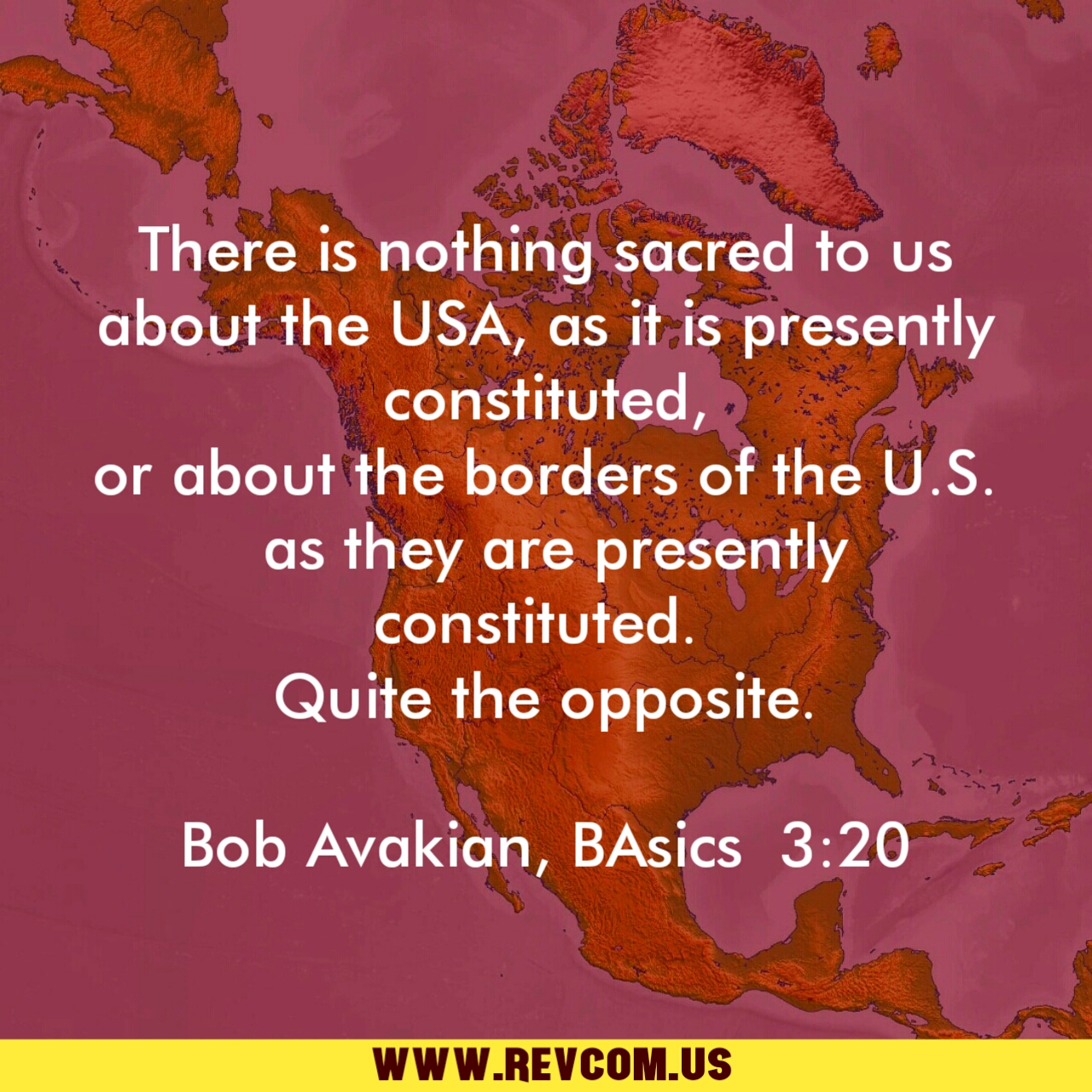
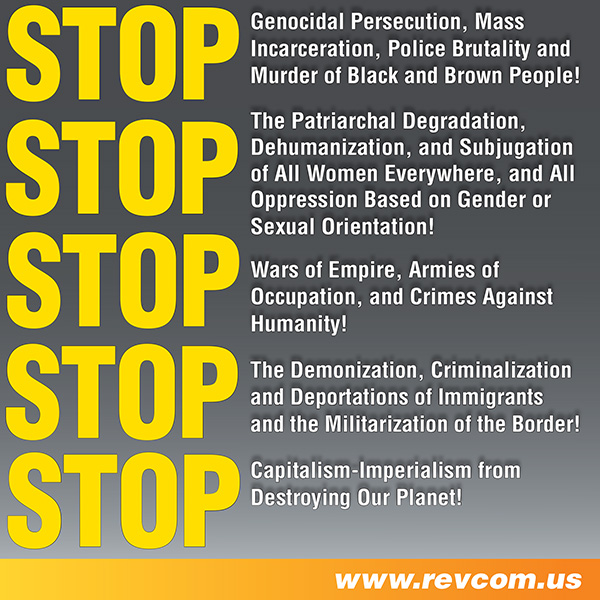
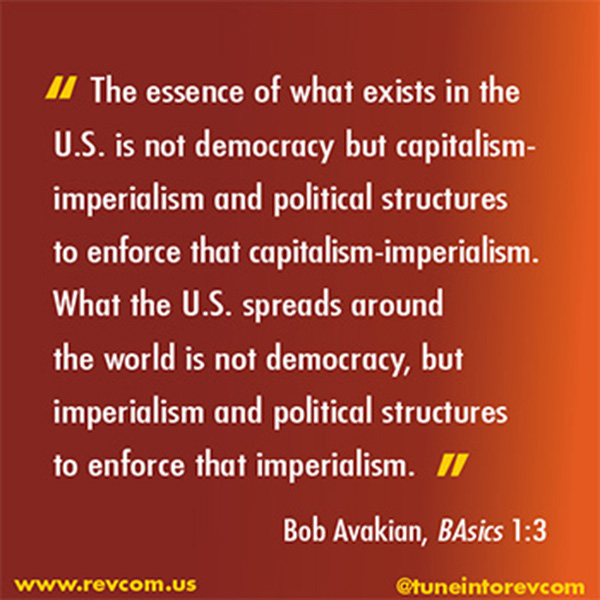
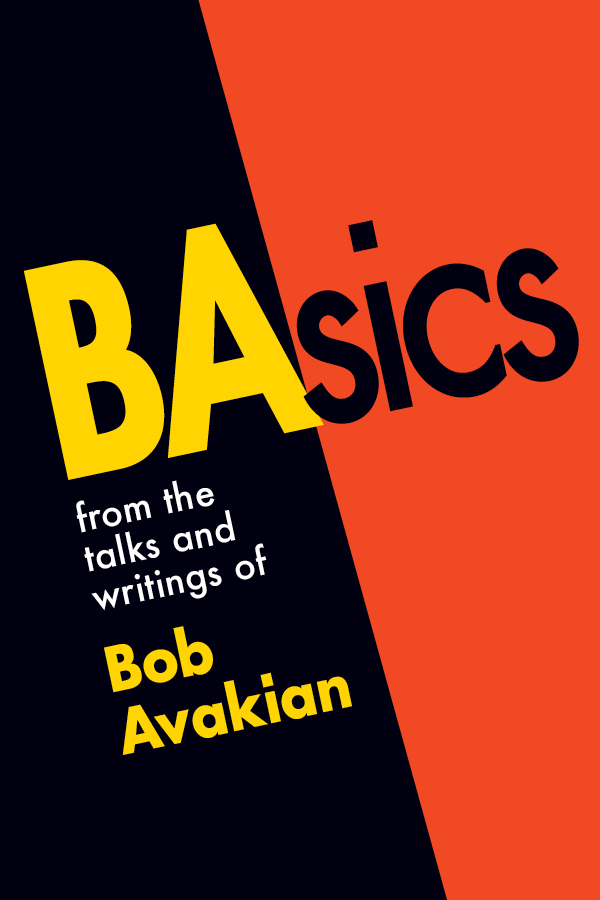
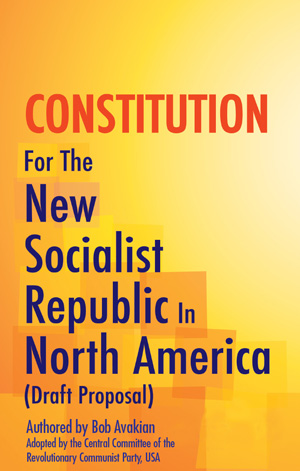
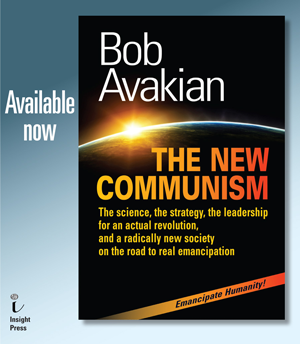 Download PDF of entire work
Download PDF of entire work




